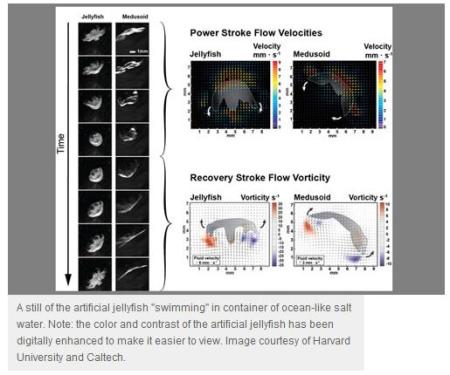Nature Biotechnology recently published a paper about a method for building a tissue-engineered “jellyfish”, starting from inanimate silicone and living cardiac muscle cells.
The research team – primarily composed of Kevin Kit Parker (Professor of Bioengineering and Applied Physics at the Harvard School of Engineering and Applied Sciences), Janna Nawroth (a doctoral student in biology at California Institute of Technology – Calthech) and her adviser John Dabiri (Professor of Aeronautics and Bioengineering at Caltech) – worked to advance tissue engineering field.
For this purpose, jellyfishes were an ideal subject, since they use muscles to pump their way through the water and their basic morphology is similar to that of a beating human heart.
Therefore, the team incorporated a silicone polymer into a thin membrane that resembles a small jellyfish, with eight armlike appendages and then was able to quantitatively match the subcellular, cellular, and supracellular architecture of the jellyfish musculature with the rat heart muscle cells.
At last, the artificial construct (dubbed “Medusoid”) was placed in a container of oceanlike saltwater and shocked into swimming with synchronized muscle contractions that mimic those of real jellyfish, basing on the principle that the muscle cells started to contract a bit on their own even before the electrical current is applied.
Watch the Caltech and Harvard official video to learn more about the design of muscular pumps and enjoy the harmonic motion of the artificial jellyfish:
These researchers are persuaded the design strategy will be broadly applicable to the reverse engineering of muscular organs in humans. So, they aim to evolve the “Medusoid” in an environment responsive and self-sufficient creature.


